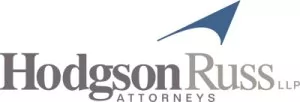Renewable energy projects in New York have long supported host communities through agreements providing benefits directly to the residents most affected by projects. New York State's recently passed Accelerated Renewable Energy Growth and Community Benefit Act (the “Act”) includes a direction to the Public Service Commission (“Commission”) to formalize aspects of providing these benefits. This includes authorization for a utility bill credit program so that Major Renewable Energy Facilities1 directly benefit local ratepayers. The process of implementing this program took major steps forward on September 23, 2020 with the Department of Public Service Staff (“Staff”) whitepaper setting forth a proposal for a Host Community Benefit Program (the “Whitepaper”) and November 10 stakeholder forum. Initial and reply comments are due on December 10 and 21, respectively, and an Order creating the program is expected at the Commission's January or February, 2021 session.2
In this alert we provide a summary of Staff's proposal for a Host Community Benefit Program along with a discussion of stakeholders' thus-far-stated comments and concerns. The bill credit provision in particular addresses the oft-raised question from local communities of how large-scale generating projects can benefit them, including low- and moderate-income and small business electricity consumers who may not benefit from the use of host funds to reduce local tax burdens, significantly expanding the potential beneficiaries of projects.
Host Community Benefit Program
As set forth in the Whitepaper, Staff proposes a statewide bill credit program to be called the Host Community Bill Program (“Program”).3 Under the Program, the owners of major renewable energy facilities will be required pay an annual fee in the amount of $500 per megawatt (“MW”) for solar projects and $1,000 per MW for wind projects for the first ten years of project operation. This fee would only apply to facilities with a nameplate capacity of 25 MW or more and would exclude any storage systems attached to the generating asset for purposes of the fee calculation. These fees would be used as the source of funding for bill credits, which would be distributed equally among the residential electric utility customers residing in the town or city where the Major Renewable Energy Facility is to be located.
To ensure that the Program provides a benefit that increases acceptance of large scale projects, Staff proposes in the Whitepaper that the bill credit must be easily recognizable on a customer's bill, in the form of an annual rebate that appears as a line-item on the utility bill. Specifically, the bill credit would appear on a customer's bill starting the year following a major renewable energy facility becoming operational, and would continue for the first ten years of project operation. Staff suggest that an annual, as opposed to monthly, credit ensures that the benefit will be substantial. In addition, Staff propose that a customer's bill include a line item identifying the amount of the credit and the Major Renewable Energy Facility with which it is associated. This would be carried out on a project by project basis so that if a community included two Major Renewable Energy Facilities, customers would receive a line item for each credit.
When considering the appropriate bill credit amount, Staff stated in the Whitepaper that they carefully examined the impact of the $/MW annual fee on the economics of future projects. Staff propose that developers seek to recover the costs of the Program through Renewable Energy Credit (“REC”) bids, effectively socializing the cost of the Program across the state's ratepayers. The Whitepaper proposes a formula Staff believes strikes an appropriate balance between creating a meaningful benefit for residents in host communities and the burden placed on ratepayers across the State. Staff further suggest that at these levels, the Program feel will avoid an imbalance between in-state and out-of-state generators who are not subject to the Program but will compete in REC solicitations.
Finally, Staff propose that the utilities administer the Program. In operation, the developer would identify the Major Renewable Energy Facility tied to a Program fee and the locality or localities in which the facility is located. The utilities would then identify the relevant residential customers and disburse the bill credit on the applicable residential utility customers' bill. Staff propose that the NYSERDA REC contracts include a requirement that developers provide proof that the Program fee funds have been transferred by December 1 of each year. NYSERDA would not release any pending or future REC payments to the developer until the proof is provided to ensure funding for the bill credits is provided to the utilities. To address the cost of Program administration, Staff propose that the utilities be allowed to retain 0.05% of the fees transferred to them by the Renewable Owner.
Feedback on the Proposed Program
At the Commission's November 10 stakeholder forum participants expressed a range of viewpoints, including the following:
- Mandatory Participation: Some stakeholders have challenged the mandatory nature of the Program. In particular, certain communities are currently negotiating payment in lieu of tax (“PILOT”) agreements and/or host community agreements (“HCA”) through which renewable energy developers are required to make payments to the host municipality. Such agreements are often used to upgrade roads, further environmental initiatives or otherwise fund local programs or interests. These agreements can bring meaningful wealth into a community and several stakeholders have expressed a concern that a standardized program may weaken a municipality's bargaining position.
In response, however, Staff explained that Section 8 of the Act mandates a program that will provide a benefit directly to the individually utility customer in a host community. PILOTs and HCAs are paid to the municipality and while they may ultimately serve an individual resident, they do not provide a direct benefit as required by the law. Staff stated in the Whitepaper that they are committed to mandatory participation in the Program but noted that municipalities may continue to negotiate PILOTs and HCAs for additional benefit.
- Type of Benefit: The Act states that the benefit can take the form of “a discount or credit on the utility bills of the utility's customers in a renewable host community, or a compensatory or environmental benefit to such customers.”4 While there has been strong support for a bill credit, some stakeholders have suggested that Program funding go to community benefit projects such as landscape-level environmental needs or even infrastructure upgrades for broadband and cellular technology. These stakeholders point out that pooled funds may advance meaningful projects that maximize value, while bill credits provide little impact to the individual.
- Program Administration: Some commenters have questioned whether the Program should be administered by a third party, such as NYSERDA. Staff however, have responded that identifying the beneficiary residential customers is the most intensive part of the Program administration and the utilities are better equipped to perform this task.
- Impact on Existing REC Contracts: Finally, it is not yet clear whether the Program will require payments from projects with existing REC contracts, which contracts would not have been awarded in response to bids that factored in the cost of the Program fee. The answer may lie in the definition of “Renewable owner,” which the legislation defines as meaning “the owner of a major renewable energy facility constructed after the effective date of this section that is proposed to be located in a host community, for which the New York state energy research and development authority has executed an agreement for the acquisition of environmental attributes related to a solicitation issued by such authority after the effective date of this section.”5 Project seeking a contract in 2020, which solicitation deadline was September 2020, would appear to be subject to the proposed mandate unless they enter into contracts with NYSERDA prior to the effective date of any Commission Order creating the program. The Commission may clarify the timing and applicability details in its forthcoming Order.
Interested parties are invited to submit initial comments on the proposal until December 7, 2020 and reply comments may be submitted until December 21, 2020.
Footnotes
1 For the purpose of the Host Community Benefit Program, a “major renewable energy facility” generally means a renewable energy system with a nameplate generating capacity of at least 25 thousand kilowatts, and appurtenant facilities as described in Executive Law §94-C(2)(h).
2 Case 20-E-0249, In the Matter of Renewable Energy Facility Host Community Benefit Program, Staff Host Community Benefit Program Proposal, filed September 23, 2020.
3 Customers services by the Long Island Power Authority (“LIPA”) are not included in the Program, however the Act requires LIPA to consider its own program.
4 Act Section 8(2).
5 Id.
The content of this article is intended to provide a general guide to the subject matter. Specialist advice should be sought about your specific circumstances.



